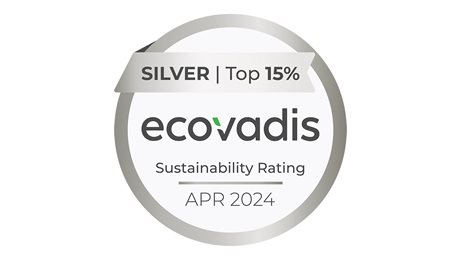
The fight against climate change demands large-scale industrial solutions to enhance the green transition needed. Ensto’s technology enables the development of infrastructure for renewables and helps overcome the challenges caused by climate change and decentralized power generation. An example of Ensto’s contribution to decentralized power generation is our DEIE control cabinet which enables the interface between electricity producers and national grid utilities.
One of the main factors of the high environmental burden of the materials used in our products are substances such as lead and SF6 that emit harmful greenhouse gases into the atmosphere. Replacing these materials is a high priority for us and for our industry as a whole, in order to meet the growing regulatory requirements and customer demand for climate-friendly solutions. Despite the challenges, we see great potential in enhancing our positive handprint in society by providing products and solutions that reduce our client’s emissions.
Ensto has made notable advancements in addressing the demand for product sustainability. We have established in-house capabilities to produce Enviromental Product Declarations (EDPs) and carbon footprints for select products, adhering to ISO 14025 standards. This reflects our commitment to trancparency and enviromental responsibility.
Circular product design benefits both the customer and the environment
Reducing waste to a minimum by reusing existing materials and products as long as possible is the essence of circular economy. Being a part of the critical infrastructure of society, Ensto’s products are of high quality, and they survive decades in harsh environmental conditions.
In the future, emphasis will increasingly be put on new business models like services. A great example of this evolving business area is the refurbishment of overhead loadbreak switches (LBS) produced by Ensto in France. The LBS called Auguste is the only one on the market with the safe advantage of an embedded voltage transformer. Through refurbishment, LBS Auguste’s normal 25-year lifespan can be extended by another 20 years.


Seeking ways to reduce waste
At Ensto, our aim is to reduce waste and promote circularity in our manufacturing plants. We have increased the shear, or recycling, reusing, recovering and composting part in our overall waste generation and have been able to reduce the landfill and energy waste part by a small amount.
We are continuously seeking ways to reduce waste generated in our manufacturing plants and also for our customers. To reduce the environmental impact of our packaging, we use as many recyclable materials as possible, such as brown corrugated board and enviromentally friendly filling. We also use less printing colors in our packaging.
Innovation and new materials for replacing harmful substances
Innovating to create materials that replace harmful substances used in our products is an important part of our work on circularity. We actively participate in the development of lead- and SF6-free products together with our suppliers and scientific institutions. One of the materials being tested is lead-free brass, which is being developed for use in brass screws. As for SF6, our product development is testing an alternative gas mixtures for circuit breakers.
Besides innovations, we are researching and prototyping technologies that help distribution system operators (DSOs) reduce their CO2 emissions. Smart sensors and IOT provide accurate fault information from their network so that focused repair actions can be made without manual investigation.

Emission reduction
Energy efficiency and renewable electricity are key to cutting direct CO2 emissions
Our approach to quality and environmental matters is outlined in Ensto’s Quality and Environmental Policy. Ensto’s environmental management system is built to comply with the ISO 14001 standard requirements.
At Ensto, we are committed to reducing our Scope 1 and 2 CO2 emissions by 50% by 2025. Electricity plays a leading role in our direct CO2 emissions. Therefore, energy efficiency and the use of renewable energy sources are the most impactful ways to reduce our own carbon footprint.
As an example of our energy efficiency efforts, a smart energy control system has been installed at our solar power plant in Porvoo factory to store energy. Our goal is to have two of our largest factories, Porvoo and Keila, use electricity generated from 100% renewable energy sources and solar panels for own renewable electricity production to be installed at our factories in France.

Engaging suppliers to reduce emissions in the value chain
With energy efficiency and by using renewable energy sources, we can significantly reduce the CO2 emissions of our manufacturing plants. However, based on our pre-evaluations, the largest sources of CO2 emissions in our supply chain are expected to be raw materials. It is therefore important to drive sustainability improvements together with our suppliers. To form a better understanding of our Scope 3 emissions, in 2022 we have started gathering data on raw materials and transport. Our goal is to fully report on our Scope 3 emissions by 2023.
Read more from our Sustainability Report









